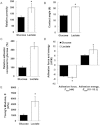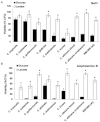Host carbon sources modulate cell wall architecture, drug resistance and virulence in a fungal pathogen
- PMID: 22587014
- PMCID: PMC3465787
- DOI: 10.1111/j.1462-5822.2012.01813.x
Host carbon sources modulate cell wall architecture, drug resistance and virulence in a fungal pathogen
Abstract
The survival of all microbes depends upon their ability to respond to environmental challenges. To establish infection, pathogens such as Candida albicans must mount effective stress responses to counter host defences while adapting to dynamic changes in nutrient status within host niches. Studies of C. albicans stress adaptation have generally been performed on glucose-grown cells, leaving the effects of alternative carbon sources upon stress resistance largely unexplored. We have shown that growth on alternative carbon sources, such as lactate, strongly influence the resistance of C. albicans to antifungal drugs, osmotic and cell wall stresses. Similar trends were observed in clinical isolates and other pathogenic Candida species. The increased stress resistance of C. albicans was not dependent on key stress (Hog1) and cell integrity (Mkc1) signalling pathways. Instead, increased stress resistance was promoted by major changes in the architecture and biophysical properties of the cell wall. Glucose- and lactate-grown cells displayed significant differences in cell wall mass, ultrastructure, elasticity and adhesion. Changes in carbon source also altered the virulence of C. albicans in models of systemic candidiasis and vaginitis, confirming the importance of alternative carbon sources within host niches during C. albicans infections.
© 2012 Blackwell Publishing Ltd.
Figures








References
-
- Adya AK, Canetta E. Atomic force microscopic investigation of commercial pressure sensitive adhesives for forensic analysis. Forensic Sci Int. 2011;210:16–25. - PubMed
-
- Aguilar-Uscanga B, François JM. A study of the yeast cell wall composition and structure in response to growth conditions and mode of cultivation. Lett Appl Microbiol. 2003;37:268–274. - PubMed
-
- Amaral PF, Lehocky M, Barros-Timmons AM, Rocha-Leão MH, Coelho MA, Coutinho JA. Cell surface characterization of Yarrowia lipolytica IMUFRJ 50682. Yeast. 2006;23:867–877. - PubMed
Publication types
MeSH terms
Substances
Grants and funding
LinkOut - more resources
Full Text Sources
Other Literature Sources

